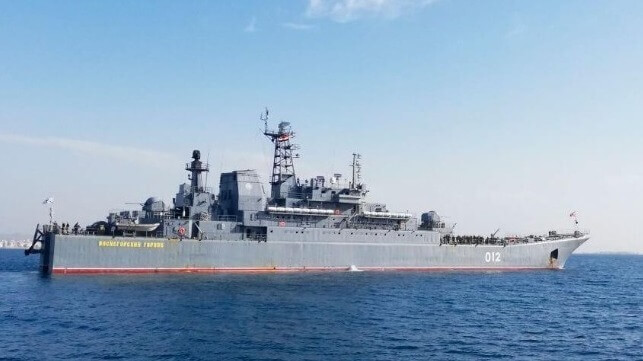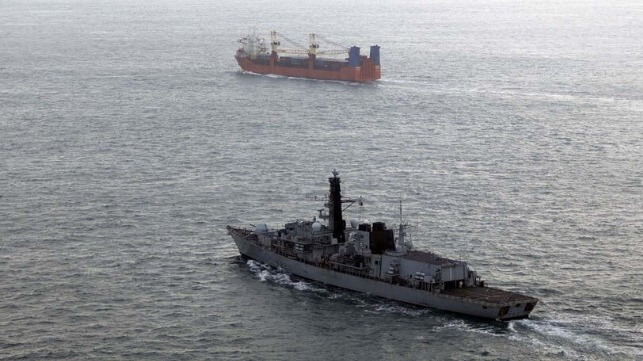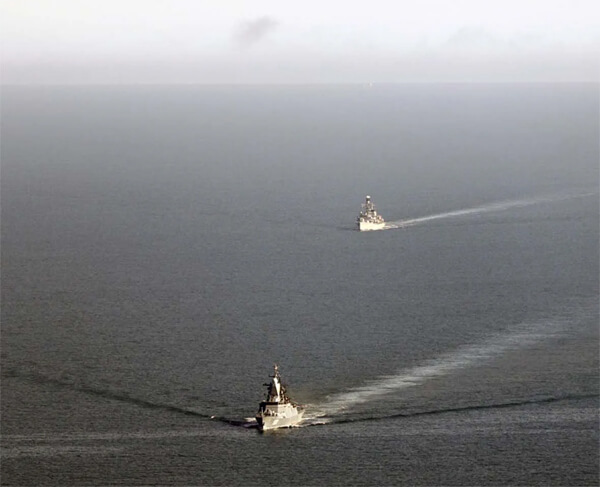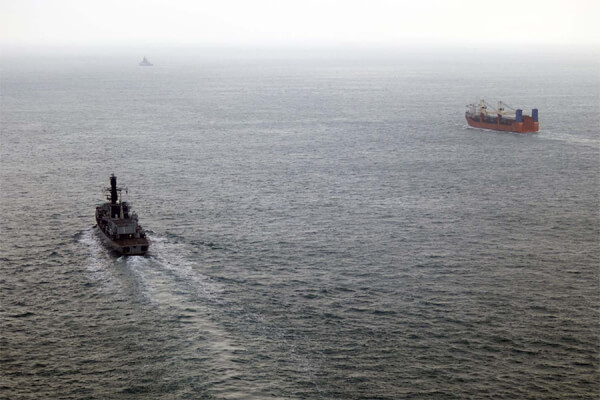Russia Clings On in a Divided Syria

The Russian evacuation of its heavy equipment from Syria continues, whilst the Russian naval presence lingers in the Mediterranean, for the time being making do without Tartus as a base facility.
The Russian military cargo ship Sparta IV was alongside in Tartus for several days up to February 25, loading wheeled armored vehicles. The Krivak-class Admiral Grigorovich (F745) appears to be lying just offshore, in Syrian territorial waters, providing protective cover and poised to escort the Sparta IV on its homeward journey. At the other end of the Mediterranean, the Gorshkov-class Admiral Golovko (F461) looks as if it may have been escorting the Baltic Leader, another Russian cargo ship last seen in Tartus in early February, as it made its way back eastwards across the Mediterranean. In between times, the Ropucha-class landing ship Alexandre Shabalin (L110) has also been loading in Tartus, a more obviously naval vessel. On March 2, Admiral Grigorovich, Alexandre Shabalin, Sparta IV and two other Russian cargo ships, the Syanie Severa and Asacalon, were noted by naval open source specialist MT Anderson leaving Tartus as a convoy.
These ship movements indicate that the Russians have business-like dealings with the new Hayat Tahrir al-Sham (HTS) government in Syria, who have also provided effective protection to allow the evacuation to continue without interdiction or hindrance. But the fact that heavy equipment is being withdrawn clearly implies that if the Russians manage to retain a foothold in Syria, it will be a smaller presence and will have a restricted role when compared with the operational freedom that the Russians had enjoyed since Soviet days.
Russian negotiations with the HTS government continue over a future presence. But as the talks continue, the political environment is changing. Given the recent global political upheavals, it should no longer be assumed that the United States is opposed to a continued Russian presence – as the Biden administration unambiguously was.
Israel has no wish to see an Iranian-dominated Syria, part of a Shi’a crescent of influence stretching from Iran, across Iraq and Syria, into Lebanon, replaced by Islamist influence supported from a dominant Turkey to the north. A continued Russian presence could act as a restraint on Turkey, as could a continued US presence in Syria. Israel’s interests are better served by a weak but stable Syria; hence its move into Syrian areas of the Golan Heights and its stated intention to support the Syrian Druze minority in areas south of Damascus, which have been threatened by HTS-aligned forces in recent weeks.
Israel also has an interest in preserving moderately-inclined Kurdish political autonomy in North East Syria and also in Iraq, as a counter-weight to both Sunni and Shi’a extremists and factional fighting, but also as a bulwark against increased Turkish influence.
The Russians have continued to maintain a naval presence in the Mediterranean, headed by its Kilo-class submarine Krasnodar (B265). Without its base facility in Tartus, it instead has used port calls in Algeria and Libya as a means of resting crews and replenishing ships, and its oiler auxiliaries have even still been permitted to top up in Tartus. It will be a while before such port calls overtax those hosting the Russians – by which time the Russians may have arrived at a new slimmed-down basing deal with the new Syrian government.



No comments:
Post a Comment